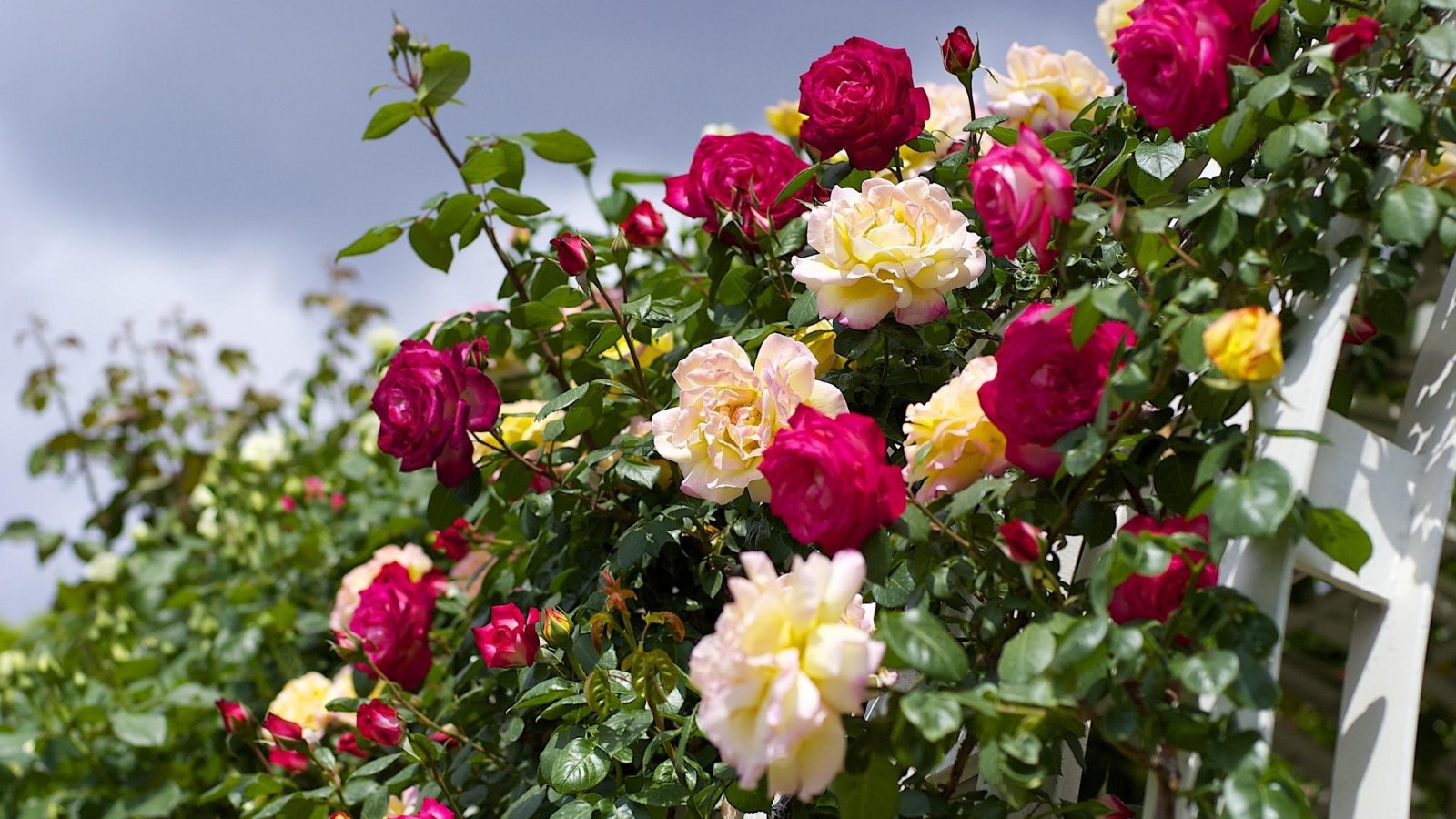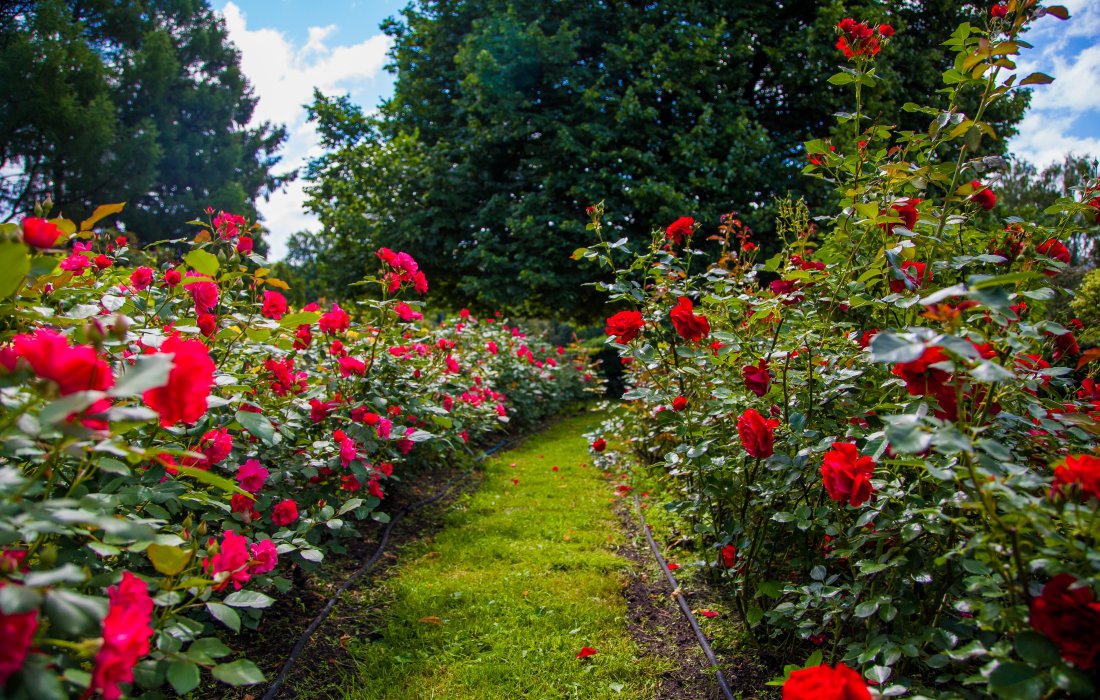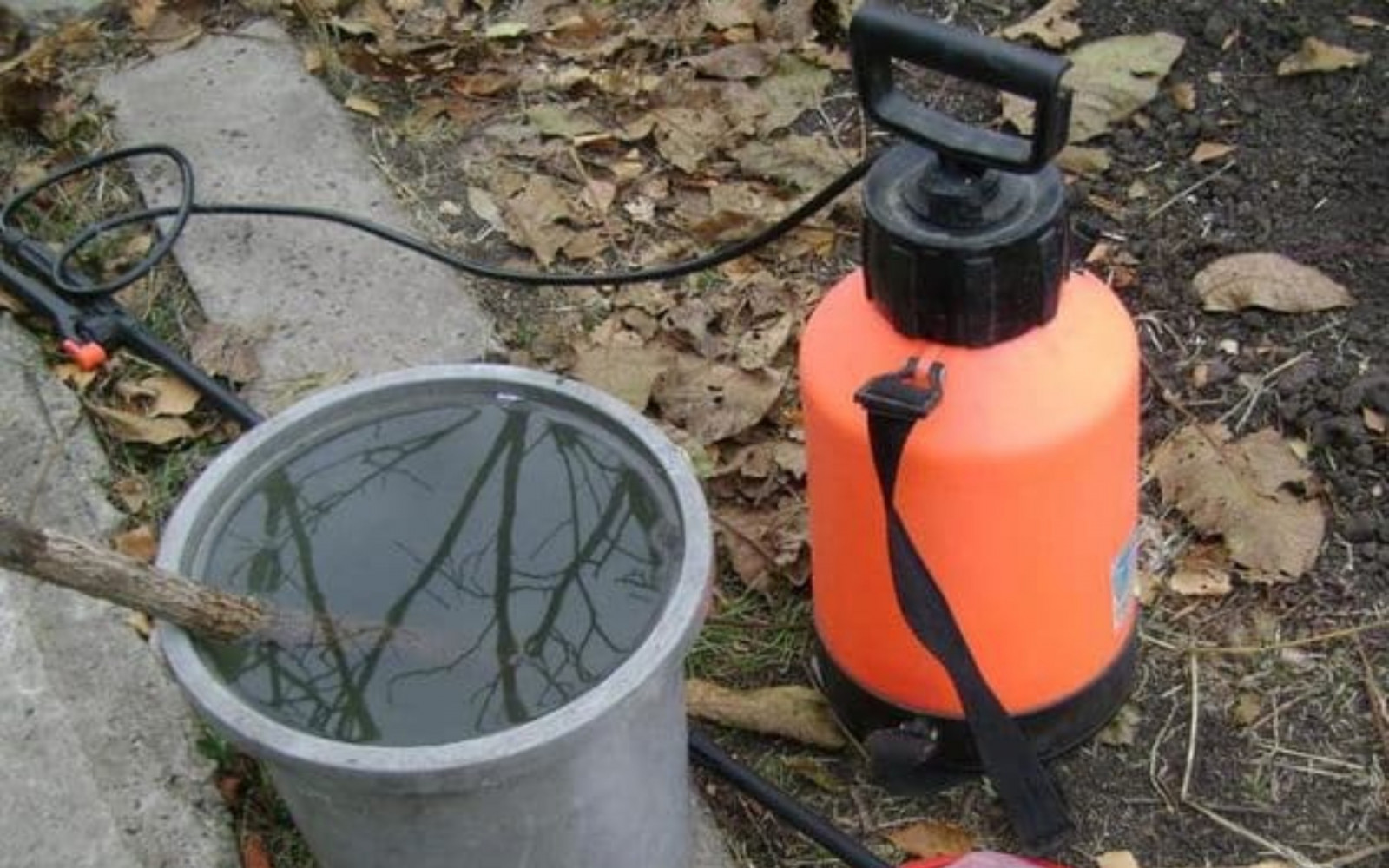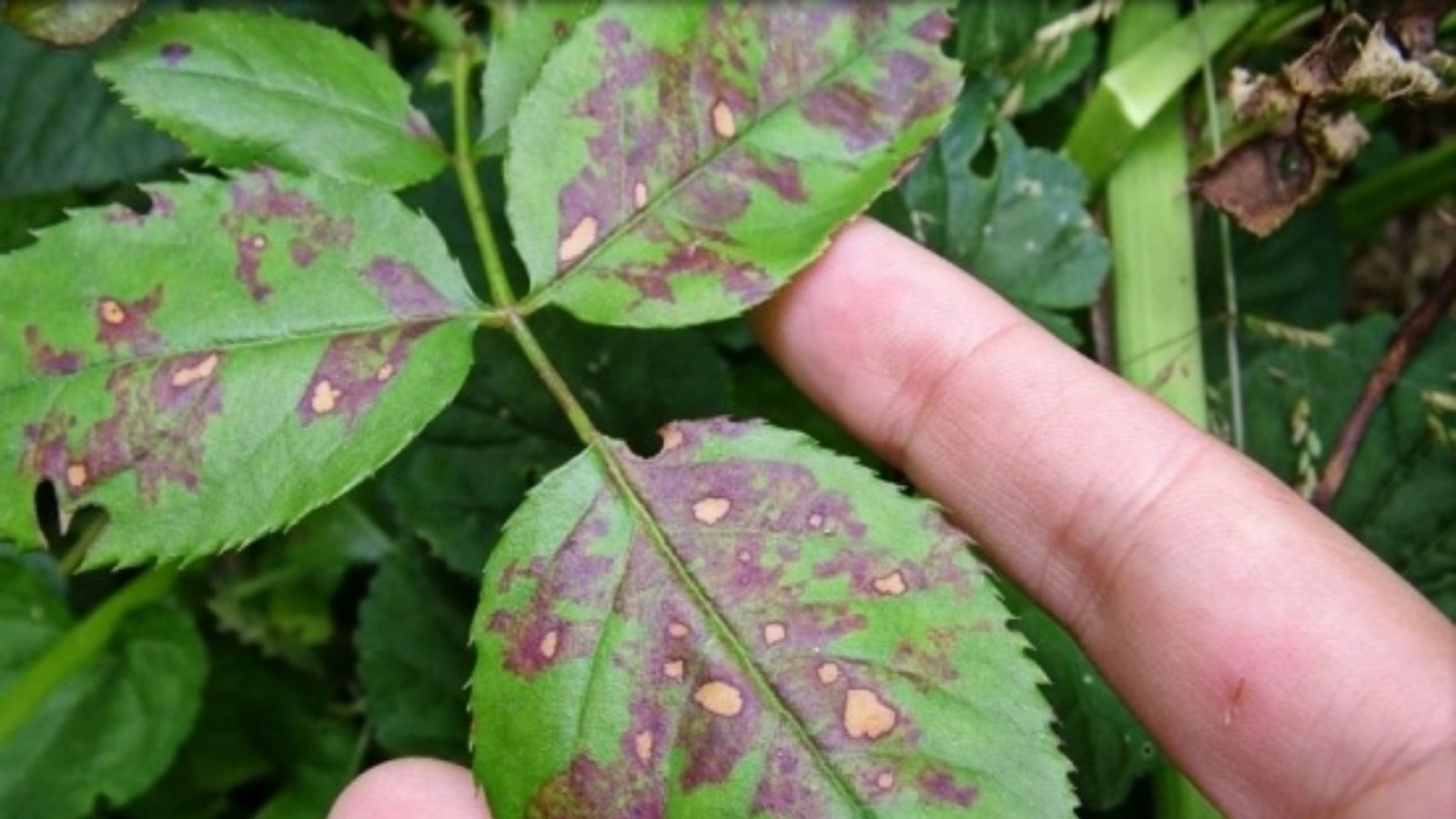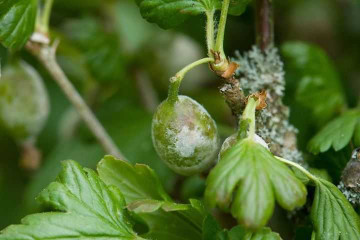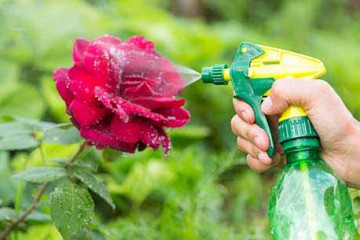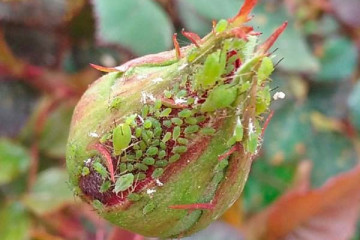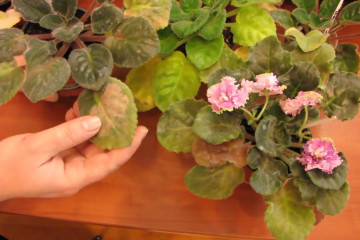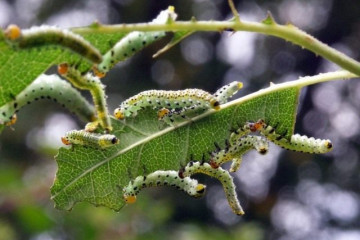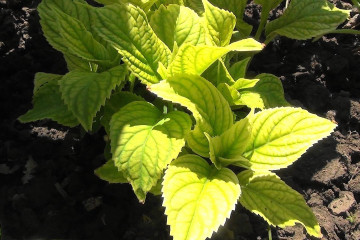Powdery mildew on roses - how to treat, means
Content:
- Powdery mildew on roses - what is it, why does it appear
- Why powdery mildew is dangerous for a rose bush
- Signs of powdery mildew in roses
- Measures to combat powdery mildew on roses
- How to process flowers, basic rules
- Prevention of powdery mildew on roses
- Powdery Mildew Resistant Rose Varieties
- Downy mildew on roses, how to recognize
Florists who grow roses on their site know that this shrub is susceptible to powdery mildew. This fungal disease causes serious damage to the plant, weakens its immunity and, in the absence of adequate treatment, can lead to death. However, not all novice gardeners know how to get rid of powdery mildew on roses and by what signs to recognize a defeat. Therefore, you should study the features of the disease, as well as familiarize yourself with those drugs and tools that will help in solving this problem.
Powdery mildew on roses - what is it, why does it appear
The causative agent of this disease is a powdery mildew parasite. As a result of its active sporulation, the surface of shoots and leaves is covered with mycelium. It can be transferred to other plants by the wind, with precipitation, and transmitted through gardening tools. As a result, not one bush is affected, but all neighboring crops.
The causative agent of powdery mildew hibernates in the cracks of the shoots, under the scales of dormant buds and in fallen leaves. Therefore, it will not be possible to solve the problem with the help of low temperatures.
You need to fight the disease with the help of special drugs. Otherwise, every time favorable conditions come, the disease will reappear and spread more and more.
Powdery mildew on roses most often develops on hybrid tea and remontant species, if the summer is rainy and hot. This is due to the fact that they have several waves of bloom throughout the season. And this significantly weakens the immunity of the shrub. However, the disease can also affect roses in the house if the growing conditions do not meet the requirements of the culture.
Favorable conditions for the development of the disease
For the fungus to begin to develop, certain conditions are necessary. The spread of the disease is facilitated by a temperature within +25 degrees and air humidity at 80-85%.
The main provoking factors:
- Prolonged rains, at the end of which warm weather was established. As a result of this, active evaporation occurs, which increases the level of humidity in the air.
- Thickened planting of roses. The lack of adequate ventilation between the shrubs leads to the active reproduction of the fungus. Most often, this factor is manifested in climbing and park roses.
- Sharp changes in night and day temperatures.
- Incorrect feeding. Excessive nitrogen content in the soil leads to a weakening of the immunity of roses. Also, this disease can appear as a result of ignoring the dosage of fertilizers and the frequency of their application.
- Heavy compacted soil. The lack of weeding and regular loosening leads to the fact that air access to the roots is impaired. This results in the plant being unable to absorb nutrients from the soil, which weakens its resistance to disease.
The acquisition of an infected seedling can also provoke the development of powdery mildew in the rose garden.
Why powdery mildew is dangerous for a rose bush
This fungus disrupts the process of photosynthesis in the leaves and shoots of the plant. Against this background, metabolic processes in the affected areas initially slow down, and subsequently completely stop. This provokes wilting of leaves, and premature leaf fall, which weakens the shrub.
Therefore, in the absence of measures to combat the fungus, the affected shrub becomes a source of further spread of powdery mildew in the area.
Signs of powdery mildew in roses
You can recognize the disease by the white bloom on the leaves, which, when erased, remains on the fingers.
Initially, it appears in some areas in the form of small spots. After a few days, they increase in size and completely spread over the entire leaf plate. As a result, the fungus moves to shoots, peduncles and even buds.
As the powdery mildew develops, the white tint of the plaque becomes a dirty gray.
Measures to combat powdery mildew on roses
White bloom on the leaves of the bush seems harmless only at first glance. In fact, powdery mildew is a dangerous disease. Therefore, you need to start fighting it when the first signs of defeat appear, so as not to waste time. For this, you can use professional and folk remedies. It is best to apply complex treatment, since it will not be possible to get rid of powdery mildew in one spraying.
Treatment with folk remedies
This method of control should be applied at the initial stage of the spread of the fungus on roses. And also it can be used as a prophylaxis.
To prepare effective products, you need to use the available ingredients. Also, the substances used to get rid of powdery mildew can be additional nutrition for the bushes, which will increase the resistance of roses.
Recipes for making folk remedies:
- Fill a container with 5 liters of water. Add 1 liter of whey and 10 drops of iodine to the liquid. Mix everything thoroughly until a homogeneous composition is obtained. Apply the resulting product for treating bushes 3-4 times at intervals of 10-12 days.
- Pour 200 g of wood ash with 1 liter of boiling water. Insist the mixture for 1 day. After that, clean and dilute with water in a ratio of 1:10. For better adhesion of the solution, add 30 ml of dish detergent. Spray the affected roses with the resulting product in the evening. Carry out the processing 1 time in 7 days, until the characteristic signs of powdery mildew disappear.
- Add 50 g of baking soda to 5 liters of warm water. Also rub 30 g of laundry soap into the solution. Mix everything until complete dissolution. Treat roses with this remedy when signs of illness appear. Repeat the procedure every 10 days.
- Dissolve 3 g of potassium permanganate in a bucket of water, mix. You need to use such a remedy 3 times at intervals of 2-3 days for preventive spraying of rose bushes.
- Fill a container with 10 liters of hot water. Pour 50 g of soda ash into the liquid and rub with 40 g of laundry soap. Stir the solution thoroughly until it becomes homogeneous. Treat the roses with the preparation after cooling 2-3 times at intervals of 7-10 days.
It should be remembered that most solutions, from among folk remedies, are easily washed off with water. Therefore, after processing, the bushes should not be sprinkled. And if it rains, then the treatment must be repeated.
Special chemicals for powdery mildew on indoor plants
When white bloom appears on many rose bushes, professional fungicides should be used. They are able not only to inhibit the development of the fungus upon direct contact, but also penetrate the tissues of the plant, spreading to all its parts.
Special chemical preparations inhibit the activity of the fungus, prevent its sporulation, stop destructive processes in plant tissues and lead to the death of the pathogen.
Effective fungicides against powdery mildew:
- Colloidal sulfur. A time-tested drug that is able to repel powdery mildew on roses. The product has a contact effect, therefore it requires uniform spraying of the leaves and shoots of the bush. Colloidal sulfur can be used at temperatures not lower than +20 and not higher than +35 degrees. Since in the first case, its therapeutic effect is reduced, and in the second, it can provoke burns. To cure roses, you need to dissolve 30 g of the drug in 10 liters of water.
- "Tiovit Jet". Another sulfur-based preparation that helps treat powdery mildew in roses at an early stage of the lesion. Mass fraction of the active component is 80%, which is characterized by contact action. To prepare a working solution, you need to dissolve 30 g of the drug in 10 liters of water. It must be applied in the temperature range from +20 to +35 degrees.
- "Speed". A systemic drug that helps to get rid of not only the external, but also the internal destructive activity of the fungus. It can be used for both garden and home roses affected by powdery mildew. To prepare the product, you need to dilute 1.6 ml in 8 liters of water. Use the solution immediately. The action of the drug begins 2 hours after treatment.
- "Topaz". A systemic fungicide that has a therapeutic effect on the spread of powdery mildew on garden and apartment roses. To remove the fungus, it is necessary to dissolve 2 ml of the drug in 5 liters of water. Processing should be done in calm weather. If necessary, it must be repeated after 10-14 days.
- Topsin-M. This drug has a systemic effect. Its active substance inhibits the activity of the fungus, both on the surface and inside the plant. To combat powdery mildew, dissolve 10-15 g of the product in 10 liters of water. The solution should be applied immediately after preparation.
How to process flowers, basic rules
To rid roses of powdery mildew and not harm the plant, you must follow some recommendations.
Basic rules for processing:
- Remove affected leaves and shoots before spraying. This is due to the fact that they will no longer be able to restore functionality. Therefore, they need to be cut and burned.
- You can not process the bushes immediately after watering or rain. In this case, the absorbency of the leaves is reduced, so spraying will not bring a positive result. The best option is an evening in dry, calm weather.
- When using folk remedies and contact chemicals, it is necessary to evenly process the leaves on both sides and the shoots of roses. Otherwise, it will not be possible to completely remove the fungus from the plant.
- When a room rose is damaged, it is necessary not only to spray the shrub, but also to replace the top layer of soil in the pot, where whole colonies of mushroom mycelium are usually concentrated.
- Powdery mildew should be dealt with in a comprehensive and regular manner. To do this, 3-4 treatments with different preparations should be carried out with a frequency of 7-14 days, depending on the stage of damage to the bush.
- Only a freshly prepared solution should be used for processing bushes for 1 day.With longer storage, it loses its effectiveness.
Prevention of powdery mildew on roses
To prevent the appearance of the fungus on the bush, and to prevent its reappearance later, it is necessary to follow certain rules of prevention. They do not require complex actions, but at the same time they reduce the likelihood of developing powdery mildew to a minimum.
Basic measures:
- Inspect bushes regularly for suspicious signs.
- Remove all weeds in a timely manner and loosen the soil at the base of the bushes after moistening.
- Every autumn, remove and burn all affected areas, fallen leaves, which will prevent the fungus from overwintering.
- It is not recommended to water the shrubs by sprinkling, so as not to create favorable conditions for the development of the pathogen.
- It is necessary to apply nitrogen fertilizers only until the middle of summer, and in the future, use phosphorus-potassium mixtures.
- In regions where climatic conditions favor the development of the fungus, it is necessary to plant varieties resistant to this disease.
- Avoid thickening of the landings.
Powdery Mildew Resistant Rose Varieties
Some roses have a high natural immunity, so the likelihood of their attack by powdery mildew is minimal.
Resistant varieties:
- Cadillac (Cadillac);
- Galaxy;
- Westerland;
- Aspirin (Aspirin Rose);
- Aphrodite (Aphrodite);
- Lady of Shalott;
- Gold Spice.
These species are less susceptible to this fungal disease, but if the growing conditions are not followed, their immunity decreases.
Downy mildew on roses, how to recognize
It is also a fungal disease, officially called peronosporosis.
It manifests itself as oily yellowish-brown spots on the leaves of a rounded and angular shape. On the reverse side, a purple-gray bloom appears on the affected areas of the plates. Subsequently, the spots grow and cause premature leaf fall.
Powdery mildew is a dangerous disease of roses, which in a short time can spread to all bushes under favorable conditions. However, prevention and timely treatment of the bushes helps to resist the defeat. After all, as you know, it is easier to prevent a disease than to fight it later.
